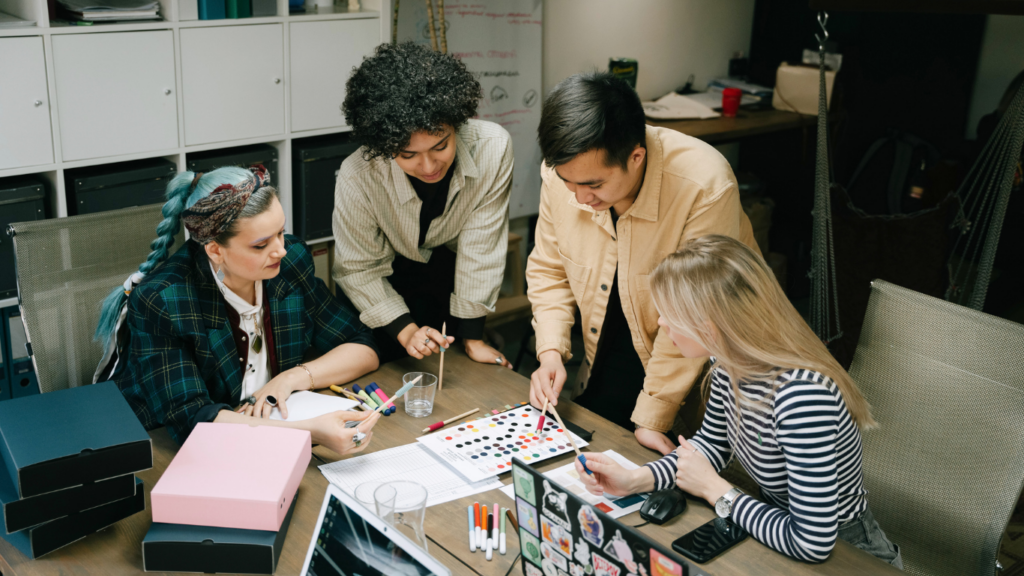Planning the perfect trip can feel overwhelming, but it doesn’t have to be. I’ve learned that having a solid checklist makes all the difference. Whether you’re dreaming of sandy beaches or bustling city streets, a well-organized plan ensures you won’t miss a beat.
Understanding Your Travel Goals
Understanding my travel goals sets the foundation for a successful trip. A clear perspective on why I travel enhances the overall experience and guides my planning process.
Identifying Your Destination
Identifying my destination involves more than choosing a location. I consider factors like climate, culture, and activities. Each destination offers unique experiences; for instance, coastal cities provide water sports, while mountains offer hiking trails.
I compile a list of destinations that match my interests to narrow my options. Researching local customs and attractions helps me envision what to expect upon arrival.
Setting a Budget
Setting a budget ensures I allocate resources effectively for my trip. I break down expenses into categories: transportation, accommodation, food, activities, and souvenirs. Establishing a daily spending limit helps me manage costs.
I research average expenses in my chosen destination, which gives me a realistic idea of the total budget needed. Prioritizing experiences over luxury can also stretch my budget further, allowing for a richer travel experience.
Researching Your Destination
Researching your destination enhances the travel experience. It helps me understand what to expect and how to engage with the locale.
Key Attractions and Activities
Identify top attractions and activities that align with my interests. These often include historical landmarks, natural wonders, museums, and local events. Checking popular travel websites, blogs, and social media platforms can provide valuable insights into must-see locations.
I often look for seasonal events, festivals, or unique local experiences that can enrich my visit. Compiling a list of key attractions allows me to prioritize my itinerary effectively.
Local Customs and Essentials
Familiarize myself with local customs and essentials to respect the culture. Understanding basic etiquette, like greeting styles and dining practices, can avoid misunderstandings. Researching safety tips and local laws also ensures a smoother trip.
I check currency, language, and basic phrases that might enhance communication. Knowing what to pack, such as appropriate clothing for the climate and cultural considerations, helps me be prepared and adapt easily to the new environment.
Creating a Comprehensive Itinerary
A comprehensive itinerary simplifies travel while maximizing enjoyment. It organizes daily activities, accommodations, and essential details for a smooth trip.
Daily Schedules
Daily schedules break down activities by day and time. Establish priorities for must-see attractions, then allocate specific time slots for each.
- Identify key destinations based on interests, such as museums, parks, or beaches.
- Research opening hours and any special events at each destination.
- Include downtime for meals, relaxation, and unexpected discoveries.
- Adjust schedules as needed to account for travel times between locations.
- Consider weather conditions to optimize outdoor activities.
Accommodation Choices
Accommodation choices significantly impact overall comfort and convenience during the trip.
- Determine accommodation types based on budget and preferences, like hotels, hostels, or vacation rentals.
- Research locations close to planned activities for easier accessibility.
- Read reviews and check ratings on platforms like TripAdvisor or Airbnb for insights.
- Evaluate amenities and services offered, such as Wi-Fi, breakfast, or transportation options.
- Make reservations in advance to secure the best rates and choices.
Packing Smart
Packing smart ensures that I have everything I need while keeping luggage lightweight and manageable. Following a few essential guidelines can make the packing process efficient and organized.
Essential Travel Gear
- Luggage: Choose durable, lightweight suitcases or backpacks suitable for your travel style. Select items with multiple compartments for easy organization.
- Clothing: Pack versatile clothing items that mix and match easily. Include lightweight, wrinkle-resistant fabrics and consider the climate.
- Toiletries: Carry necessary personal hygiene products in travel-sized containers. Organize items in a waterproof toiletry bag for easy access.
- Technology: Bring essential electronics like mobile phones, chargers, and universal adapters. Consider portable power banks for on-the-go charging.
- Travel Documents: Organize important documents, such as passports and tickets, in a travel wallet. Keep copies in a separate location for security.
- First Aid Kit: Include basic medical supplies like band-aids, pain relievers, and any prescription medications. Prepare for minor health issues while traveling.
- Comfort Items: Pack neck pillows, eye masks, and earplugs for better comfort during long journeys, especially on flights or bus rides.
Packing Tips and Tricks
- Rolling Clothes: Roll clothing items instead of folding them to maximize space and minimize wrinkles.
- Packing Cubes: Use packing cubes to organize items by category, such as clothes, shoes, and accessories, making it easier to find essentials.
- Weight Distribution: Distribute weight evenly in luggage to make it easier to carry and reduce strain. Place heavier items at the bottom.
- Plan Outfits: Create a daily outfit plan to avoid overpacking. This strategy minimizes the number of clothing items needed.
- Limit Shoes: Limit to two or three pairs of shoes that suit various occasions to save space. Include a pair suitable for walking and a pair for formal events.
- Layering: Layer clothing to maintain warmth or adjust to changing temperatures. This approach reduces the need for bulky jackets or sweaters.
- Check Restrictions: Familiarize yourself with airline baggage restrictions to avoid extra fees. Measure and weigh luggage before departing.
Finalizing Your Plans
Finalizing your travel plans requires careful attention to essential documents and transportation arrangements. This stage is crucial to ensuring a smooth travel experience.
Important Documents and Insurance
Gathering important documents is vital for any trip. Ensure you have your passport, required visas, and driver’s license ready. Make photocopies or digital backups of these documents for safety. It’s wise to check expiration dates on passports since many countries require at least six months’ validity beyond your stay.
Additionally, securing travel insurance adds a layer of protection. Travel insurance covers unforeseen events like trip cancellations, medical emergencies, and lost luggage. When selecting insurance, compare policies to find coverage that meets your needs, such as medical expenses and emergency evacuation. Also, keep a printed copy of your insurance policy and emergency contact numbers handy during your trip.
Arranging Transportation
Arranging transportation simplifies getting to and from your destination. Consider various options based on distance and preference, such as flights, trains, or driving. When booking flights, compare prices across multiple websites, and look for flexible fare options that allow for changes without hefty fees.
For ground transportation, renting a car offers freedom in exploring the area. Research local rental agencies for rates and insurance requirements. If using public transport, familiarize yourself with local schedules and routes before arriving to minimize confusion.
For airport transfers, consider pre-booking shuttle services or rideshares to save time upon arrival. This ensures a smooth start to your trip, allowing for efficient transitions between locations.




